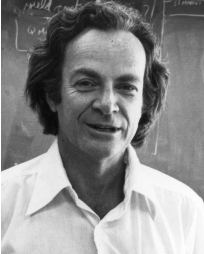
"I got really fascinated by these (1+1)-dimensional models that are solved by the Bethe ansatz and how mysteriously they jump out at you and work and you don't know why. I am trying to understand all this better." — R. P. Feynman, 1988
Lecture Course, Summer Term 2019
ITP, Hannover University
Lecturer: Till Bargheer
Stud.IP: lecture and exercises
Catalog: lecture and exercises
Many of the following problems are derived from a lecture course by Niklas Beisert at ETH Zürich (from 2016, link), others from a lecture course by Florian Löbbert at Humboldt-University Berlin (also from 2016, link).
Among all physical systems, typically only the very simplest can be solved exactly. This is true for classical as well as quantum mechanical systems. Integrable models are an exception: They possess extended symmetries that, in spite of (infinitely) many degrees of freedom, allow for an exact description of the relevant physical observables. They hence provide a unique window into physical regimes that are hardly accessible by other methods. Traditionally at home in statistical physics, integrability in recent years has led to a lot of progress in the context of the AdS/CFT duality among superconformal field theory and string theory.
The aim of this lecture is a basic introduction to the theory of integrable models as well as the associated mathematical structures and methods, and the exposition of selected examples.
For Master students and everyone interested!
Recommended prerequisites: Classical mechanics, quantum theory, (statistical physics). Enthusiasm for mathematical structures in theoretical physics!

"I got really fascinated by these (1+1)-dimensional models that are solved by the Bethe ansatz and how mysteriously they jump out at you and work and you don't know why. I am trying to understand all this better." — R. P. Feynman, 1988
The Korteveg—de Vries (KdV) equation models waves in shallow water, and is an integrable one-dimensional field theory. Its typical feature are solitonic solutions with a rigid waveform and a constant velocity. When two such solitons scatter, they undergo a non-trivial transformation, but their final wave form remains unchanged, up to an overall (repulsive) shift:
Here's the Mathematica file used to generate the animation.